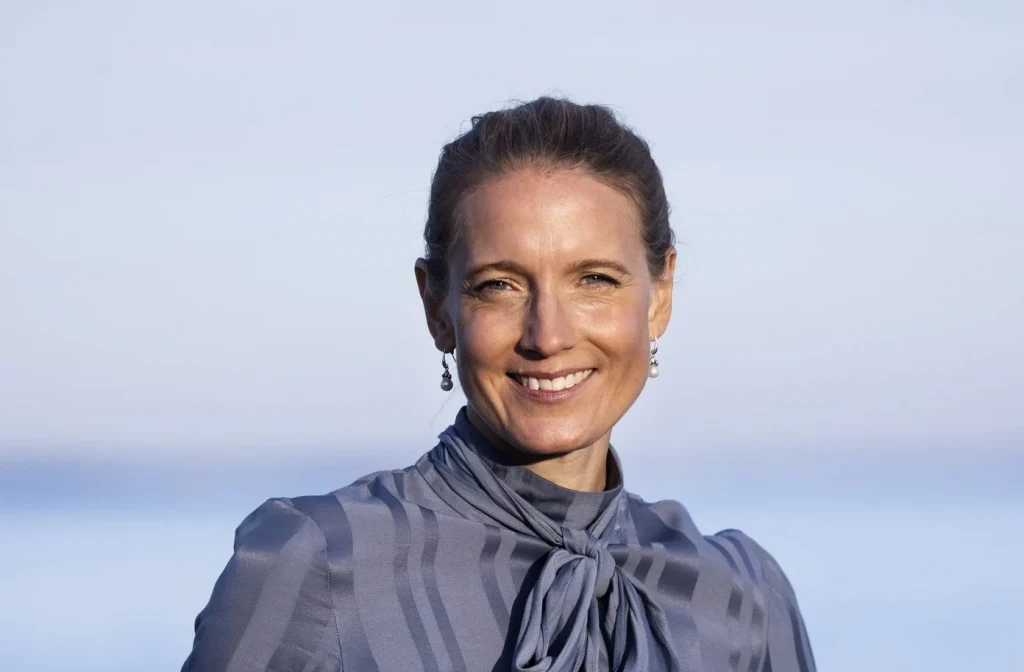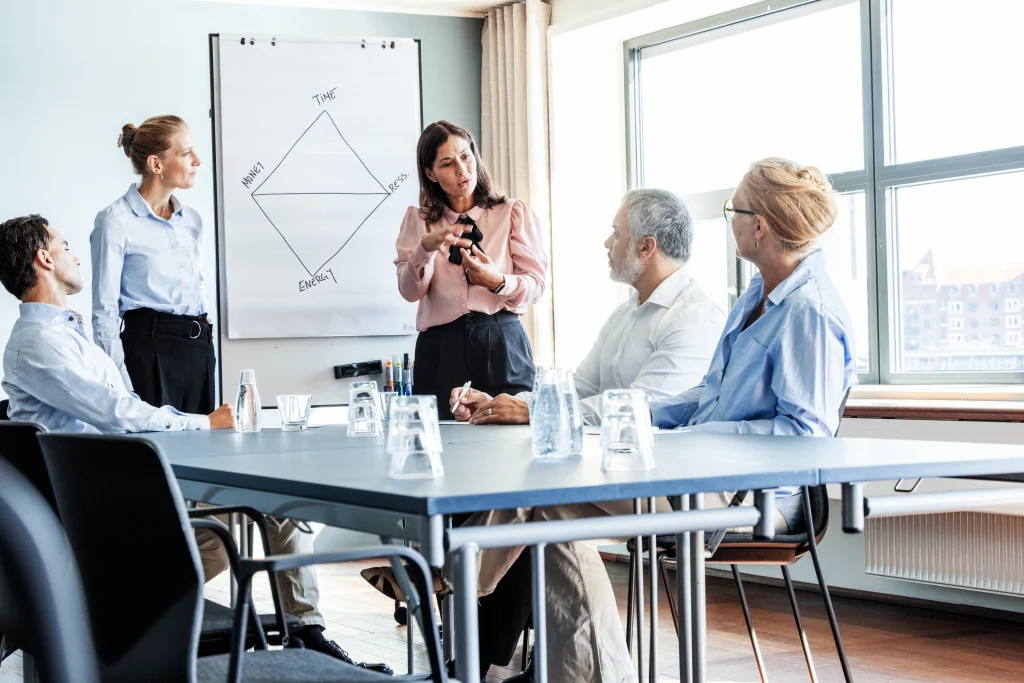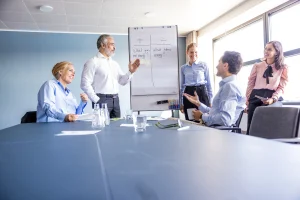
Share This Post
This article will give you an insight into how an interaction analysis (IPA) can strengthen team collaboration and help to create high performing teams.
Investing in your team can give a massive return. Think of this example:
Martin and Dan are in the same leadership team, but elegantly they avoid talking. Martin is responsible for sales, so his team talks to customers all the time, while Dan is responsible for development. Martin feels that Dan does not listen. So, he has given up. But he did not address it – and no one else did either. In effect, Dan misses out on a lot of customer insights. But as he is not the confrontational type either, he just lets it pass. The meetings become energy draining. Long discussions that often seem pointless and too few decisions are made.
Observing Martin and Dans behavior at meetings we mirrored back to them the low number of socio emotional interactions and high number of negative questions towards the task-oriented interactions after filling out the interaction framework of Bales. Looking at the matrix of interactions in the framework was quite an epiphany to both.
Want to read this article in Danish? Then access it here.
Create collaborative teams with interaction analysis (IPA)
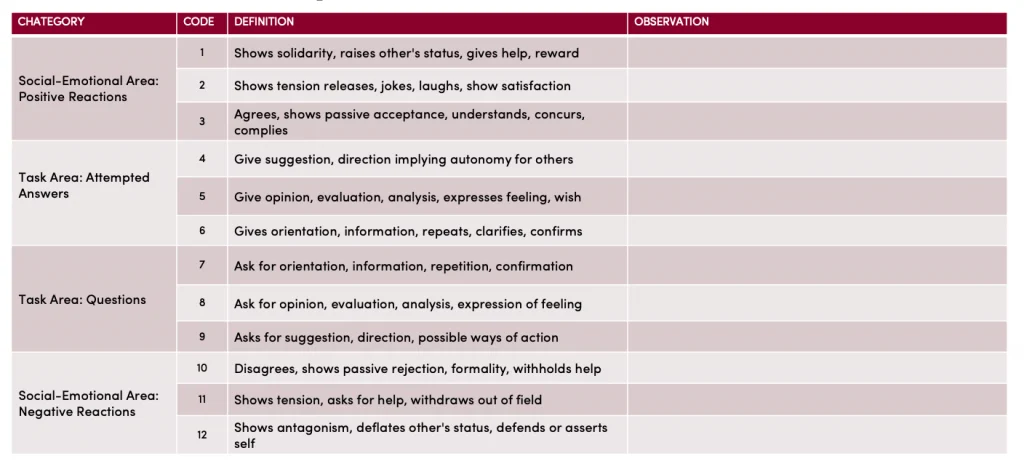
Bales’ Interaction Analysis that we used is a framework developed by Francis J. Bale, is an influential figure in the field of group dynamics and communication. His work focused on observing and categorizing the types of interaction that occur within small groups. The key idea behind Bales’ Interaction Analysis is in a structured way, to understand how group members communicate and behave, and how these interactions influence the group’s overall functioning.
Bales’ primary viewpoint was that in any small group, members engage in a variety of interactions which can be broadly classified into two main categories:
- Task-oriented interactions, which are focused on solving problems, exchanging information, and achieving the group’s goals.
- Socio-emotional interactions, which are concerned with creating and maintaining relationships within the group, managing emotions, and addressing interpersonal dynamics.
In practice, this implies that a healthy team has a balance between task oriented interactions and socio emotional interactions. Maybe you are interested in reading more about what team dynamics are. Then you can read more here.
If you did experience how communication and relationships became more task oriented when there was a lock down due to covid 19, this division between task oriented and socio-emotional interactions might give you some perspectives too. Effective teamwork does take a good mix of both types of interactions. That is why some people started doing social team activities, such as an informal cooffee meeting over teams, during lockdown.
Would you like the newest knowledge and inspiration sent directly to you?
Then subscribe to our monthly newsletter
A strong collaborative team relays on the balance and nature of the interactions
Bales was trying to show that the balance and nature of these interactions are crucial for the health and productivity of a group. Too much focus on task-oriented behavior can lead to stress and conflict, while excessive socio-emotional focus might detract from achieving the group’s objectives. Understanding this balance helps in managing group dynamics more effectively, leading to more productive and harmonious interactions.
Applying this approach in practice to team development processes will give you all some interesting perspectives that can enhance your collaboration, engagement, and performance.
Returning to Dan and Martin’s situation we observed the team in different situations and through that data made an interaction analysis which is visually showed in a matrix.
This Matrix are made upon the data collected in the schema of interactions (Figure 1). The matrix shows the interactions in the different areas. SP stands for Social-emotional Interactions, Positive. SN the oppersite, the Social-emotional Interactions, Negative. The areas TA and TQ stands for Task Area, Attempted Answers, and TQ for Task Area, Questions.
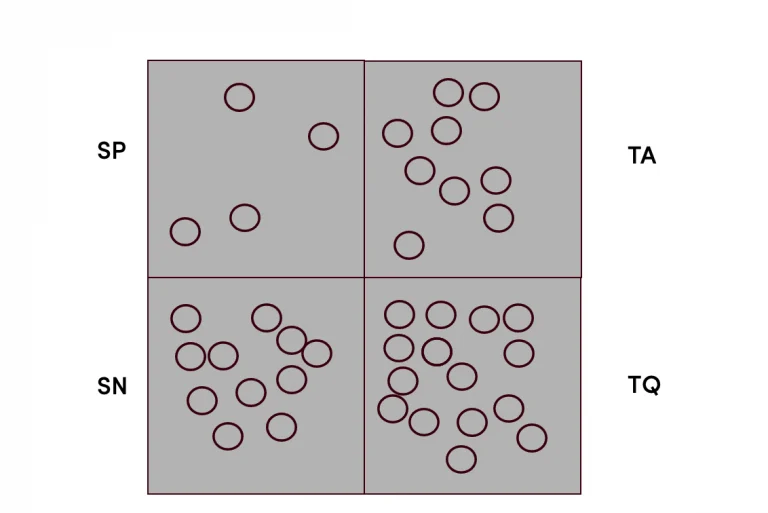
For Dan and Martin and their team the analysis was a wake-up call. It helped them to realize that they had to be more aware of spending some time together, get to know each other on a personal level, to highten up their socio-emotional interactions. As you can see in the matrix above the SP area is almost empty, which is the social – emotional area of positive interactions. This area of collaboration is crucial because it is here you get to know each other and that decreases e.g., misunderstandings and conflicts. On the contrary, the abundance of negative socio-emotional interactions (SN) indicated an urgent issue – they constantly misunderstood each other’s intentions.
They also needed to figure out how to be more constructive while collaborating on a task. The analysis as the matrix shows pointed at low interactions in the category of TA (Task area – attempted answers) and a high level of interactions in the Task area – questions. This indicates that there is not enough interactions regarding the clarification of a task and too much questioning of the solutions.
For Dan it was a true eye-opener that what he thought he was doing – reaching out to Martin for costumer insights – actually felt for Martin as if Dan undermined his knowledge of costumer needs. And on the contrary for Martin to be aware of why Dan needed these costumer insights to develop what the costumer actually needed instead of just what was asked for made the epiphany. They now understood that they were on the same mission and, with our facilitation, came up with different work-streams to enhance their collaboration in the future. Not undermining each of their competencies but made their communication and collaboration easier. This has not only affected their teamwork to be more effective but also gave the benefit of happier clients. As one client said:
“Before, we got what we wanted. Now we get what we wish for.”
If you want to know what you and your team can do to enhance your collaboration reach out here and let’s have a non-binding chat. You can reach us here.
3 things you can do to improve team collaboration
In the meantime, you can greater collaborative teams by having focus on these three aspects of great collaboration:
- Making a room for your team members to know each other on a personal level. This strengthens the social/emotional interactions and will make your team stronger.
- Ask for everyone’s opinion and don’t be nervous about asking those how speaks the most to stop speaking and start listen. This will provide the team with greater insights on e.g., solutions for tasks and strengthen the task-oriented interactions in a positive and solution-oriented way.
- Ask for regular feedback from your team and remember to say: “Thank you for the feedback”. Maybe you ask yourself why you as a leader should ask for regular feedback? You should because it creates a culture where you are a frontrunner of openness and reflection. That it is up to everyone to speak up and give their opinion for you as a team to have the foundation of creating strong results.
We can help you to deal with the real challenges and creating a strong collaborative team for success. Reach out at hello@josefinecampbell.com.
And remember that we help people in multinational companies to handle challenges in a meaningful way and take business to the next level. If you would like to be updated with new articles and videos, sign up for our mailing list. Your mail is not shared with anyone and there are advantages to being on the list e.g., getting the first chapter of Josefine Campbell’s book, Power Barometer, for free.
References
The Cambridge Handbook of Group Interaction Analysis , pp. 441 – 450. DOI: https://doi.org/10.1017/9781316286302.024[Opens in a new window]. Publisher: Cambridge University Press. Print publication year: 2018.
Bales R. F. (1950), Interaction Process Analysis: A method for the study of small groups. Cambridge, MA: Addison-Wesley.
Bales R. F. (2001), Social Interaction Systems: Theory and Measurement. Publisher: Transaction Publishers.
https://www.symlog.com/SCG/HistoryRFB.aspx.


